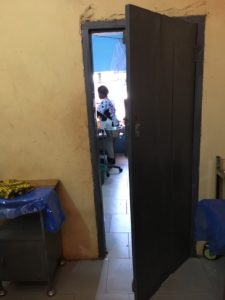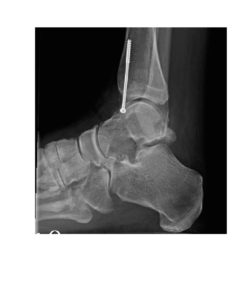I am writing this column in Northern Ghana, where 1 in 16 children dies before 5 years of age. Although that number is high when compared to developed countries, there has been amazing progress since 1960 when one in 5 died.
The under-five mortality rate is a valuable statistic because it gives an overall idea about the state of health and healthcare in a country. It reflects the social, economic and environmental conditions in which children live. It is defined as the number of children who die before their 5th birthday per 1000 live births, and is also called the child mortality rate.
The UN set 8 Millennium Development Goals, one of which was to: “Reduce by two-thirds, between 1990 and 2015, the under-five mortality rate.†In Ghana during that period the rate went from 127 to 62 deaths per 1000 births. This halving reflects global progress; worldwide child mortality dropped from 90 to 45 in this period. Although we didn’t hit the goal, cutting the death rate in half is still an amazing accomplishment. Sadly, worldwide almost 6 million young children still die each year.
There is hope, however. Ghana recently trained several thousand Community Health Workers (CHWs). These “barefoot doctors†live close to the people they serve and treat illnesses as well as advocating prevention.
I traveled with a midwifery training-team to a village clinic. This part of the country has more than its share of maternal and infant deaths. Two midwives from the Baptist Medical Centre did an excellent job of teaching the clinic’s staff, which included 2 midwives and 3 midwifery students. Two rooms away another student midwife performed a delivery so quietly that I was amazed when a nurse brought out the healthy baby who was just minutes old.
While in the health center I saw a bottle of high-potency vitamin A capsules and was reminded of a remarkable study performed in this region. The overall death rate of children was lowered by 20% if they were given vitamin A supplementation. It appears the vitamin helps children fight infections such as measles and diarrhea, even where vitamin A deficiency is not prevalent.
If we are concerned about overpopulation, why should the death of children trouble us? Of course there are humanitarian reasons to keep children alive and healthy—they are our future! Demographers have found that people choose to have large families where there is a high child mortality rate.
It may appear paradoxical that preventing deaths will help eventually to slow population growth, but it is true. One of the best-known demographers of Africa, John Caldwell, cited three requirements before people will choose to have smaller families: educating girls and women, making effective contraception available and reducing the under-five mortality. He said that people only consider having a small family when child mortality is less than 130 per 1000. I could understand that number better when I converted it to a percentage—13%. That means that one in seven children dies—the thought is distressing!
In addition to training midwives, Ghana has instituted other ways to have healthier children. As I walk to the hospital I pass a nutrition center where small children are fed healthy, local food. Young kids with kwashiorkor (protein deficiency) and marasmus (severe malnutrition) are referred from the hospital, from outlying clinics and by CHWs. They spend 2 weeks or longer there being fed; many are still breast feeding. Every child is accompanied by a parent who is taught many ways to promote health, including nutrition and good hygiene.
Three days ago a young pregnant woman came to the hospital complaining of headache. Her blood pressure was elevated and the doctor noticed that she kept bumping into things, as though she couldn’t see well. Her mother gave the history that the patient had had an episode of shaking—a seizure. The doctor diagnosed eclampsia, the worst form of Pregnancy Induced Hypertension (PIH), with cortical blindness—a type of stroke. It was necessary to induce labor to save the mother’s life and hopefully her vision will improve. Unfortunately the very premature baby didn’t survive.
I am in Ghana studying PIH because it is more common here than in the USA. PIH can endanger the mother’s health and life, and has no treatment other than delivery of the baby. It is one of the most common causes of loss of life for babies and mothers, yet is poorly understood. Perhaps my study will shed light on this cause of obstetrical tragedies.
© Richard Grossman MD, 2017

